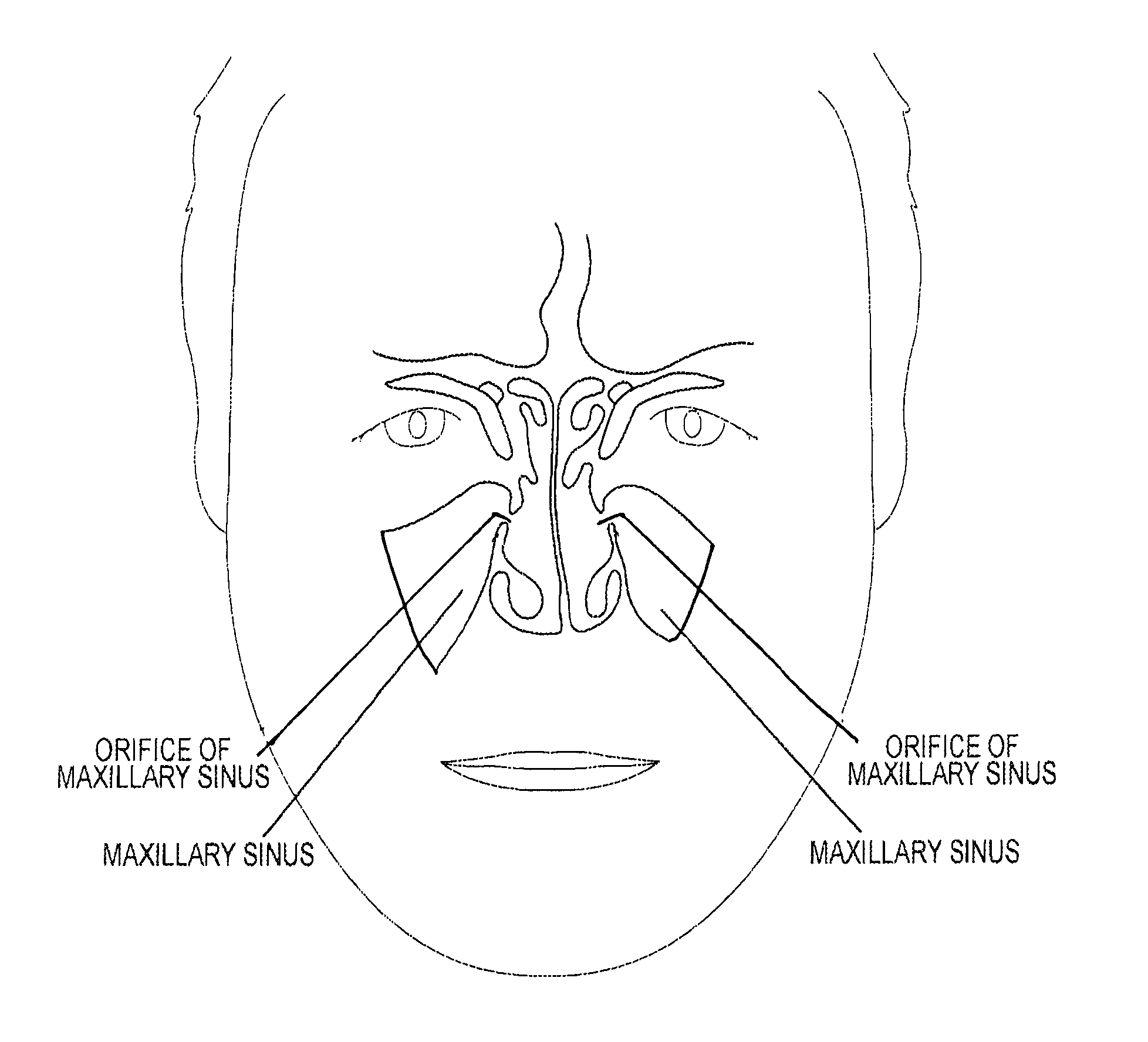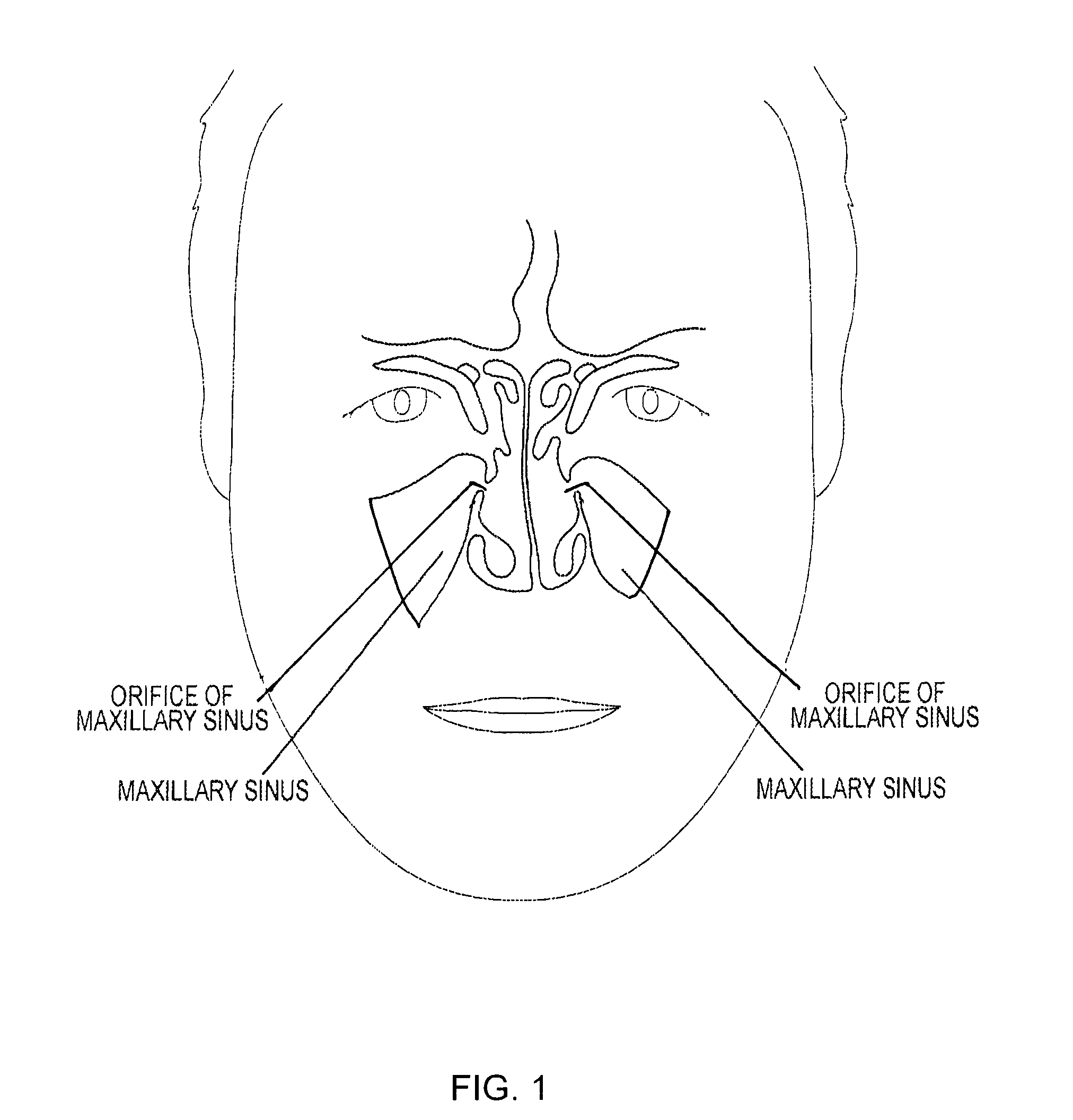Device and method for delivering therapeutic substances to the maxillary sinus of a patient
a technology patients, which is applied in the field of devices and methods for delivering therapeutic substances to the maxillary sinus of patients, can solve the problems of limiting the efficiency of intranasal delivery to the cns, affecting the number of individuals requiring therapeutic interventions for treating cns disorders, and unsatisfactory and potentially dangerous systemic exposur
- Summary
- Abstract
- Description
- Claims
- Application Information
AI Technical Summary
Benefits of technology
Problems solved by technology
Method used
Image
Examples
exemplary experiment 1
[0043]Table 1 illustrates data obtained from an experiment comparing the concentration of an exemplary compound, lidocaine, in selected tissue, structures and / or regions when administered by intravenous administration and intranasal administration.
[0044]Experimental Design for Exemplary Experiment 1
[0045]Rats were administered the same lidocaine dose intranasally or intravenously. After approximately 30 minutes, rats were perfused and a selected number of brain / CNS, orofacial and body structures were dissected to determine lidocaine concentrations. Tissues were pulverized and supernatant fractions were analyzed using an ELISA. Further experimental design may be found in the incorporated reference Johnson et al., Trigeminal Pathways Delivery a Low Molecular weight Drug from the Nose to the Brain and Orofacial Structures, Molecular Pharmaceutics Vol. 7, No. 3, 884-893 (2010).
[0046]Results for Exemplary Experiment 1
[0047]With reference to Table 1, blood levels of lidocaine were found t...
exemplary experiment 2
[0050]Experiment 2 evaluated the biodistribution of IRdye 800 10 minutes after intranasal delivery of IRdye 800.
[0051]Experimental Design for Exemplary Experiment 2
[0052]Prior to intranasal treatment with IRdye 800, rat tissue is nearly transparent at 800 nm. The body was visualized using a 700 nm filter and the IRdye 800 using a 800 nm filter. The two images obtained were then overlayed in order to visualize the movement and biodistribution of IRdye 800 after intranasal delivery. Infrared imaging was performed for 30 minutes prior to euthanasia and tissue collection. Following perfusion, the brain was removed, sectioned and imaged. Selected tissues were also removed and imaged. Concentrations of IRdye 800 were obtained using an Odyssey scanner and ranging from 10 nM to 100 μM. If the dye was visible to the naked eye, it was classified as >100 μM. Further experimental design details may be seen in the incorporated reference Johnson et al., Trigeminal Pathways Delivery a Low Molecula...
PUM
 Login to View More
Login to View More Abstract
Description
Claims
Application Information
 Login to View More
Login to View More - R&D
- Intellectual Property
- Life Sciences
- Materials
- Tech Scout
- Unparalleled Data Quality
- Higher Quality Content
- 60% Fewer Hallucinations
Browse by: Latest US Patents, China's latest patents, Technical Efficacy Thesaurus, Application Domain, Technology Topic, Popular Technical Reports.
© 2025 PatSnap. All rights reserved.Legal|Privacy policy|Modern Slavery Act Transparency Statement|Sitemap|About US| Contact US: help@patsnap.com


